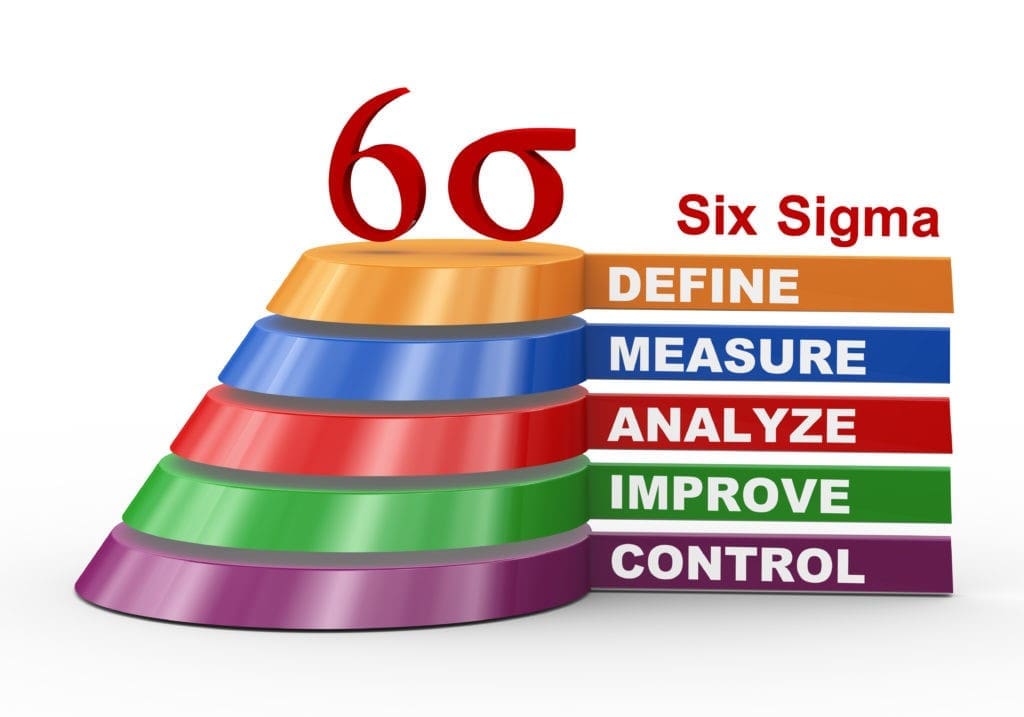Table of Contents:
Six Sigma vs. LEAN Certification: Which Should I Choose?
Prospective employers are often looking for Six Sigma and Lean Six Sigma certifications/qualifications if you’re interested in a job in Quality Management. In this article, you’ll also find out the 6 Sigma Green Belt requirements.
Six Sigma and Lean Six Sigma can be considered two distinct tracks with three levels of certification. Both begin at the Green Belt level, and move up to Black Belt or Master Black Belt. Which path is best for you? Below is a list of Six Sigma eligibility considerations.
Even the most successful business tools and methods must change over time to meet the changing market. Six Sigma is no exception. It has multiple branches, disciplines and schools of thought that have evolved from its original concept over time to meet new needs.
Two different schools of thought were merged in one case to create a cohesive method that addresses multiple goals. Lean Six Sigma is a blend of management methods that focuses on efficiency and builds on Six Sigma’s principles. Both methods aim to achieve the same goal: more efficient processes that result in a higher bottom line. You can see the difference in how they approach this goal.
Six Sigma
Six Sigma was created with one goal in mind: to reduce variation and defects in production processes by statistical analysis. Six Sigma employs one of two 5-step methods to achieve this goal: either the DMAIC method or the DMADV .
Each method has its own uses. DMAIC stands for Define, Measure, Analyze and Improve, and Control. This involves identifying the problem, taking stock of current processes, and then identifying and implementing a solution. This process is perfect for improving supply chain performance or when adjustments are necessary, but not a new function.
This is where DMADV (Define Measure, Analyze Design, Verify) comes into play. While the first phases are identical, the Design phase allows the creation of a completely new tool to solve the problem. The Verify phase focuses on verifying that the solution actually solves the problem.
Six Sigma is about identifying and fixing problems in the supply chain.
6 Sigma Green Belt Requirements: You can take the Six Sigma Green Belt exam if you’re an experienced professional who has more than three years of experience in one or several Six Sigma areas. You are eligible to take the Six Sigma Black Belt exam if you have been involved in one or more projects. The 6 Sigma Green Belt requirements aren’t too complicated.
You can either take the Lean Six Sigma Green Belt, or the Black Belt exam if you don’t have any work experience but are willing and able to study. These Lean Six Sigma exams do not require any prerequisites.
The Master Black Belt certification (Six Sigma Master Black Belt, Lean Six Sigma Master Black Belt) is recommended if you want to mentor, train, or consult on projects and provide Six Sigma guidance for organizations.

Lean Method
The Lean method is completely focused on eliminating waste and providing maximum value to customers while investing the least amount. Toyota’s Business System, which was a business philosophy that allowed the company to run at its best, was the first to use the term Lean. It encompasses every level of an organization and helps to guide new processes as well as drive the allocation of resources. Six Sigma and Lean are different in that Six Sigma is more focused on manufacturing. However, Lean often shapes all aspects of a company.
Lean Six Sigma blends these two approaches to create a powerful toolkit to reduce waste. The DMAIC method is a great way for companies to identify and solve wasteful practices. The synergy of these methodologies is primarily designed to eliminate the 8 types of waste. This means that any part of a process, whether it’s time, material, or effort, doesn’t add value. These are the types of waste:
- Quality Standards Broken
- Overproduction: Exceeding demand, or producing more than what was ordered
- Waiting Process bottlenecks and downtime
- Unutilized Talent – Inefficiently using or misallocating human resource
- Transportation Inefficient shipping methods
- Inventory– Keeping on top of a surplus product or raw material
- Motion Unnecessary Moving of Product, Material, or People
- Additional Processing – More work than necessary
Lean Six Sigma
Six Sigma and Lean systems share the same goal. Both systems seek to eliminate waste and create efficient systems, but they have different methods of achieving this goal. The main difference between Six Sigma and Lean is the way they determine the root cause of the waste.
Practitioners of Lean believe waste is caused by inefficient steps in production that don’t add value, while 6 Sigma advocates claim that waste results when there are variations within the production process.
Both of these assessments are true. This is why both Six Sigma methodologies and Lean have been so successful at improving business performance in many areas. These two disciplines have been particularly successful when used together, hence Lean Six Sigma.
Six Sigma and Lean Six Sigma: What’s the Difference?

Lean Six Sigma is the perfect tool for companies that want to improve their processes and provide as much value as possible to customers. DMAIC’s phases of thinking and clear plan can be very useful when applied to any type of business case.
New methods and unique philosophies will emerge as the lines between Six Sigma and Lean continue to blur. These experts will be the next big innovation in Six Sigma thinking.
It would be helpful to understand the differences between Lean, Six Sigma and other forms of Six Sigma. Six Sigma is focused on improving process capability and eliminating variation.
Lean is a method of reducing waste. While Lean is often done ad-hoc and requires little to no training, Six Sigma strives to create ‘Black Belts’; it also requires a highly skilled infrastructure. Both methods use the ‘Learn from doing’ method of training. Six Sigma can be applied to any business process, while Lean can be used in the manufacturing sector. Six Sigma uses statistical metrics, but Lean relies on comparing best practices with the current.
Lean Six Sigma is great for efficiency. It has a loophole in that the management must spend considerable effort and time training their employees and have LSS specialists available round-the-clock. The assumption is that they will reap the benefits. This is where the problem lies.
Lean Six Sigma is a method that prioritizes candidate projects based on their return on investment (ROI). The best ROI projects are therefore prioritized. The cost of implementation will not change as the experts remain on duty and the time passes. The point where the ROI of projects is lower than regular Lean Six Sigma implementation costs comes around. This business strategy is no longer viable. Lean Six Sigma allows organizations to reduce their expenses by streamlining processes. However, expenses do have a minimum level. For example, For example, the manufacturer of drive shafts cannot make steel or machinery available free of charge. Lean Six Sigma can help you achieve the lowest cost. If you are already close to the minimum cost, you should reconsider Lean Six Sigma.

Choosing the Right Certification
Six Sigma certification is not offered by a single organization. It varies depending on the guidelines of each organization. There is some confusion about the certification level.
- Choose the right accreditation body. Ensure that your certification body is recognized by top international organizations and bodies. Two main accreditation bodies are recognized worldwide: the American Society for Quality and the International Association for Six Sigma Qualification.
- The right certification There are four levels to certification, as described above. It is important to determine which certification is best for you. Before you choose the right certification, make sure to read the eligibility requirements and prerequisites.


















